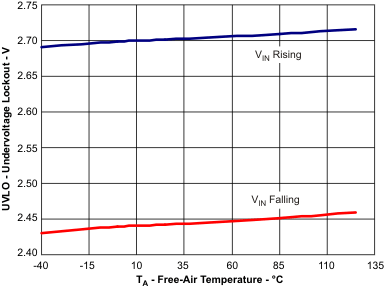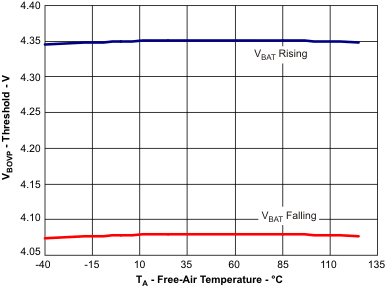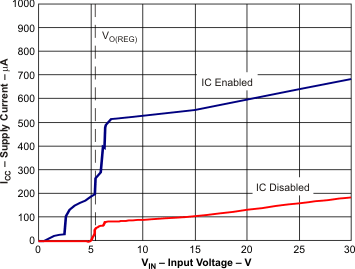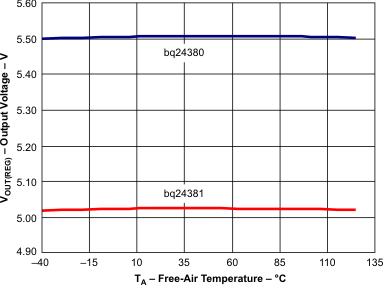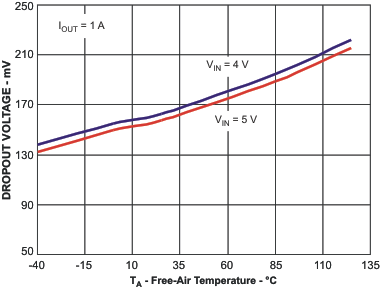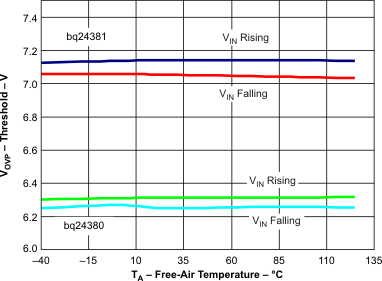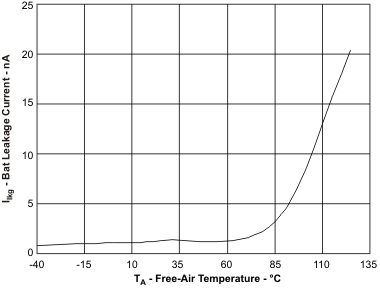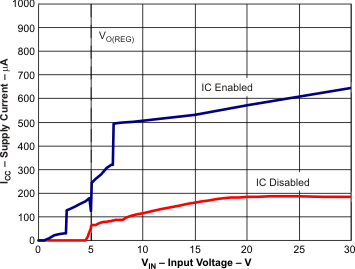SLUS805C April 2008 – August 2015
PRODUCTION DATA.
- 1 Features
- 2 Applications
- 3 Description
- 4 Revision History
- 5 Pin Configuration and Functions
- 6 Specifications
- 7 Detailed Description
- 8 Application and Implementation
- 9 Power Supply Recommendations
- 10Layout
- 11Device and Documentation Support
- 12Mechanical, Packaging, and Orderable Information
Package Options
Mechanical Data (Package|Pins)
- DSG|8
Thermal pad, mechanical data (Package|Pins)
- DSG|8
Orderable Information
6 Specifications
6.1 Absolute Maximum Ratings
over operating free-air temperature range (unless otherwise noted) All voltage values are with respect to the network ground terminal unless otherwise noted.(1)| MIN | MAX | UNIT | |||
|---|---|---|---|---|---|
| VI | Input voltage | IN (with respect to VSS) | –0.3 | 30 | V |
| OUT (with respect to VSS) | –0.3 | 12 | |||
| FAULT, CE, VBAT (with respect to VSS) | –0.3 | 7 | |||
| IOUTmax | Output source current | OUT | 2 | A | |
| Output sink current | FAULT | 15 | mA | ||
| TJ | Junction temperature | –40 | 150 | °C | |
| Tstg | Storage temperature | –65 | 150 | °C | |
(1) Stresses beyond those listed under Absolute Maximum Ratings may cause permanent damage to the device. These are stress ratings only, which do not imply functional operation of the device at these or any other conditions beyond those indicated under Recommended Operating Conditions. Exposure to absolute-maximum-rated conditions for extended periods may affect device reliability.
6.2 ESD Ratings
| VALUE | UNIT | |||
|---|---|---|---|---|
| V(ESD) | Electrostatic discharge | Human-body model (HBM), per ANSI/ESDA/JEDEC JS-001(1) | ±2000 | V |
| Charged-device model (CDM), per JEDEC specification JESD22-C101(2) | ±500 | |||
(1) JEDEC document JEP155 states that 500-V HBM allows safe manufacturing with a standard ESD control process.
(2) JEDEC document JEP157 states that 250-V CDM allows safe manufacturing with a standard ESD control process.
6.3 Recommended Operating Conditions
| MIN | NOM | MAX | UNIT | ||
|---|---|---|---|---|---|
| VI | IN voltage range | 3.3 | 30 | V | |
| IO | Output current, OUT pin | 1.7 | A | ||
| TJ | Junction temperature | –40 | 125 | °C | |
6.4 Thermal Information
| THERMAL METRIC(1) | bq2438x | UNIT | |
|---|---|---|---|
| DSG (WSON) | |||
| 8 PINS | |||
| RθJA | Junction-to-ambient thermal resistance | 64 | °C/W |
| RθJC(top) | Junction-to-case (top) thermal resistance | 84.1 | °C/W |
| RθJB | Junction-to-board thermal resistance | 33.9 | °C/W |
| ψJT | Junction-to-top characterization parameter | 1.9 | °C/W |
| ψJB | Junction-to-board characterization parameter | 34.3 | °C/W |
| RθJC(bot) | Junction-to-case (bottom) thermal resistance | 5.8 | °C/W |
(1) For more information about traditional and new thermal metrics, see the Semiconductor and IC Package Thermal Metrics application report, SPRA953.
6.5 Electrical Characteristics
Over junction temperature range –40°C ≤ TJ ≤ 125°C and recommended supply voltage (unless otherwise noted)(1) Not tested. Specified by design
6.6 Timing Requirements
| MIN | NOM | MAX | UNIT | |||
|---|---|---|---|---|---|---|
| IN | ||||||
| tDGL(PGOOD) | Deglitch time, input power detected status | CE = LO or HI. Time measured from VIN 0 V → 5 V 1-μs rise-time |
8 | ms | ||
| INPUT OVERVOLTAGE PROTECTION | ||||||
| tPD(OVP)(1) | Input OV propagation delay | VIN: 5 V → 10 V | 200 | ns | ||
| tREC(OVP) | Recovery time from input overvoltage condition | CE = LO. Time measured from VIN: 7 V → 5 V, 1-μs fall-time |
8 | ms | ||
| BATTERY OVERVOLTAGE PROTECTION | ||||||
| tDGL(BVovp) | Deglitch time, battery overvoltage detected | VIN > 4.5 V, CE = LO, Time measured from VVSAT rising from 4.1 V to 4.4 V to FAULT going low. | 176 | μs | ||
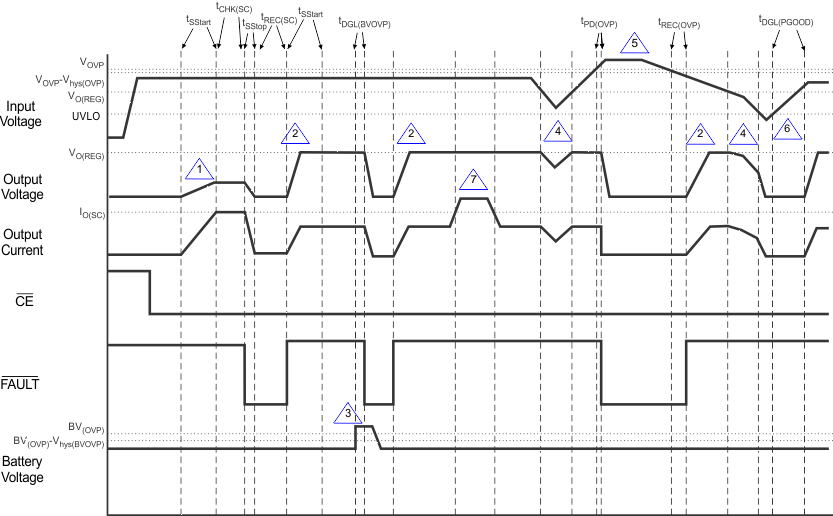
- Short-circuit during start-up
- Normal start-up condition
- Battery overvoltage event
- VUVLO < VIN < V(OREG) – VOUT tracks VIN
- Input overvoltage event
- Input below UVLO
- High-current event during normal operation
6.7 Typical Characteristics
